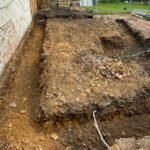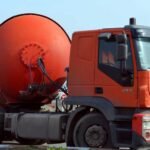The aviation industry relies on a complex network of parts and components to ensure the safety, efficiency, and functionality of aircraft. Understanding the essential parts of an airplane is crucial for anyone involved in aviation, whether as a professional or an enthusiast. These parts range from the visible structures to intricate systems working behind the scenes. Each component plays a vital role in the aircraft’s overall performance, making the understanding of these parts fundamental to comprehending how modern aviation operates. This article explores the key components that constitute an aircraft, providing insights into their functions and importance.
1. Fuselage
The fuselage is the central body of the aircraft, housing the cockpit, passenger cabin, and cargo areas. It is designed to be aerodynamic, minimizing drag and allowing for efficient flight. The fuselage must withstand significant stresses during flight, such as pressure changes and aerodynamic forces, necessitating the use of strong, lightweight materials like aluminum alloys and composites. Additionally, the fuselage often contains systems like avionics, fuel tanks, and environmental controls, making it a hub of critical functions. Its design and construction are crucial to the aircraft’s overall safety and performance.
2. Wings
Wings are the primary lift-generating components of an aircraft, designed to create the necessary aerodynamic forces to enable flight. They come in various shapes and sizes, depending on the type of aircraft and its intended use. The wings contain a complex structure of spars, ribs, and skin, often incorporating advanced materials to balance strength and weight. Flaps, ailerons, and other control surfaces on the wings adjust the aircraft’s lift and roll during flight, allowing for maneuverability. The design and engineering of wings are critical for achieving the desired performance and efficiency in flight.
3. Empennage
The empennage, or tail assembly, includes the horizontal and vertical stabilizers, which help maintain the aircraft’s stability and control. The horizontal stabilizer prevents unwanted pitch movements, while the vertical stabilizer controls yaw. These components are essential for ensuring that the aircraft flies straight and level, responding predictably to pilot inputs. The empennage also often includes the rudder and elevators, which provide additional control over the aircraft’s direction and angle of attack. Proper design and maintenance of the empennage are vital for the overall stability and safety of the aircraft.
4. Landing Gear
The landing gear is a critical component of any aircraft, responsible for supporting the aircraft during takeoff, landing, and while on the ground. This system must be meticulously designed and maintained to handle the stresses of landing and ground operations. Understanding the intricacies of landing gear helps in appreciating the broader scope of aviation parts and equipment, which includes various components that ensure safe and reliable flight. Regular inspection and maintenance of landing gear are essential to prevent malfunctions and ensure optimal performance. As a fundamental element of aircraft safety and functionality, landing gear exemplifies the importance of high-quality parts and equipment in modern aviation.
5. Engines
Aircraft engines are the powerhouses that provide the thrust necessary for flight. There are several types of engines, including turbofan, turbojet, turboprop, and piston engines, each with specific applications depending on the aircraft’s mission. Engines convert fuel into thrust through complex thermodynamic processes involving components like compressors, turbines, and combustion chambers. Modern engines are designed to be highly efficient, minimizing fuel consumption while maximizing thrust. The reliability and performance of aircraft engines are fundamental to safe and effective flight operations.
6. Avionics
Avionics encompasses the electronic systems used for communication, navigation, and control of the aircraft. These systems include radios, GPS, autopilots, and flight management systems, which assist pilots in navigating and controlling the aircraft safely. Advances in avionics have significantly improved the accuracy and reliability of flight operations, allowing for more precise navigation and automated control. Avionics systems are continually evolving, incorporating new technologies to enhance situational awareness and operational efficiency. Proper maintenance and updating of avionics are essential for maintaining the safety and performance of modern aircraft.
7. Control Surfaces
Control surfaces are movable sections of the aircraft’s wings and tail that allow the pilot to control the aircraft’s attitude and flight path. These include ailerons, elevators, and rudders, each serving a specific function in altering the aircraft’s pitch, roll, and yaw. The effective operation of control surfaces is crucial for maneuverability and stability during flight. They are connected to the cockpit controls through a series of mechanical linkages, hydraulic systems, or fly-by-wire systems. Regular inspection and maintenance of control surfaces ensure they operate correctly and contribute to the aircraft’s overall safety.
8. Fuel System
The fuel system stores and delivers fuel to the engines, ensuring a steady and reliable supply during all phases of flight. It includes fuel tanks, pumps, filters, and valves designed to manage the fuel’s flow and pressure. The system must be meticulously designed to prevent leaks and contamination, which can have severe safety implications. Advanced fuel systems also incorporate monitoring and management technologies to optimize fuel efficiency and detect issues early. Maintaining the integrity and functionality of the fuel system is vital for the aircraft’s performance and safety.
9. Hydraulic Systems
Hydraulic systems power many of the aircraft’s critical functions, including landing gear, brakes, and flight control surfaces. These systems use fluid under pressure to transmit force and perform work, providing reliable and efficient operation of mechanical components. Hydraulic systems are designed to withstand high pressures and temperatures, ensuring they function correctly under all operating conditions. Redundant systems and rigorous maintenance protocols are essential to prevent failures and ensure continued operation. Proper hydraulic systems are crucial for the safe and efficient operation of the aircraft.
Conclusion
The complex interplay of various parts and systems ensures the functionality and safety of modern aircraft. From the fuselage and wings to the engines and avionics, each component plays a vital role in the aircraft’s operation. Understanding these parts and their functions provides valuable insight into the intricacies of aviation technology. As advancements continue to emerge, the importance of these components in maintaining safe, efficient, and reliable flight will only grow. A comprehensive knowledge of aviation parts is essential for anyone involved in the industry, ensuring continued progress and innovation in the world of aviation.
















